Greg Livingston, Fluitec
February, 2014
Introduction
An effective technique for flushing deposits out of turbine oil systems employs the use of a detergent/ dispersant cleaning solution. The downside of this method is that the cleaning agent is incompatible with the turbine oil, destroying its water and air separation characteristics. This presentation describes a less expensive option of using a compatible solubility enhancer to remove oil degradation products from the turbine oil system. Case studies will show when this method is appropriate and how to match system contamination problems with oil flushing techniques.
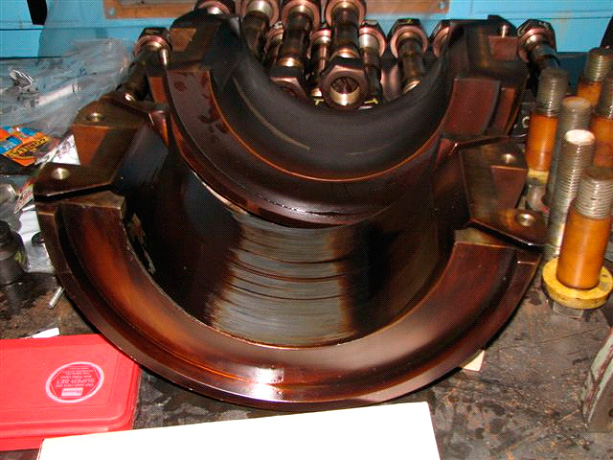
What does Flushing Mean?
“Flushing” is a catch-all term used to describe a variety of activities that remove lube system contamination and clean the internals of your system.
Noria defines oil flushing as, “A fluid circulation process that is designed to remove contamination and decomposition from a lubrication-based system.”
ASTM D6349 (Standard Guide for Cleaning, Flushing, and Purification of Steam, Gas, and Hydroelectric Turbine Lubrication Systems) defines flushing as, “circulation of liquid through the lubrication system or a component, when the turbine is not operating, to remove the contaminant.”
In reality, there are a multitude of techniques employed to restore lube system cleanliness. The selection of the flushing method should depend on the overall plant objectives, types of contaminants in the system and condition of the lube system components.
Flushing, when required and done effectively, is a high value maintenance practice for your machines. Restoring system cleanliness can add years of life to your equipment. However, flushing is a disruptive practice to any lube system, and carries significant risk if not done appropriately. Determining if a flush is required for your system is the first step.
There are many circumstances when flushing is required such as:
- Commissioning new machines
- Re-commissioning machines that have been taken out of commission for a period of time
- After a system components fails, leaving broken pieces in the lube system
- After a filter collapses, releasing contaminants back into the system
- When an incompatible fluid has been inadvertently added to the system
- Changing to a new brand or formulation of lubricant and the compatibility is not well understood
- When oil degradation products such as sludge and varnish are in the system
Unless there is a catastrophic failure, the most common time that turbine oil users contemplate a flush is between oil changes.
Is a flush required each time you change your turbine oil? There is not an industry-accepted practice for determining this. Removing degraded oil and deposits from the internals of your lube system certainly seems to make sense before charging your system with new oil. You wouldn’t want to have a bath in a dirty bathtub. But, flushing can be costly and resource-intensive. Is it really necessary?
Flushing is not required between oil changes if:
- The lubricant system is free of sludge, varnish and other deposits
- The majority of old oil can be removed from the system
- The new turbine oil is of the same type and brand as the in-service oil or if extensive compatibility tests (ASTM D7155) have been done to verify compatibility.
Flushing between oil changes should be done under the following circumstances:
- There are indications that sludge, varnish or other deposits may be in the system
- The current in-service oil is in poor physical or chemical condition and it is not feasible to remove more than 98% of the oil from system
- The new charge of turbine oil is going to be a different formulation which may not be compatible with the current in-service Lubricant.
The Impact of putting New Turbine Oil into a Contaminated System
Since the primary mode of turbine oil failure is oxidation, it is often said that the life and performance of a turbine oil is dependent upon the health of its antioxidant system. Recharging a dirty lube system with new oil can have a significant impact on the life and performance of this new oil.
Oil degradation products are reactive species that will rapidly deplete the fresh antioxidants.
Other properties such as acidity, water separability, foam inhibition and Membrane Patch Colorimetry values can all be impacted by residual varnish and sludge in the system. Below are a couple of examples that illustrate why putting new oil into a contaminated system can have adverse effects.
Example 1: The impact to oil life from adding new oil into a dirty system in a large ship’s controllable pitch propeller hydraulic fluid sump
Large ships often use R&O oil as a hydraulic fluid to control the steering in its Controllable Pitch Propeller System. The ship in this example had annual maintenance overhauls and changed their hydraulic fluid when the acid number climbs above 0.20 mg KOH/g. The ship did no flushing between these oil changes. Below is a result that this maintenance practice had on the life of the oil.

Fig 2: Life of the oil in a CPP system is approximately cut in half when new oil is put into a dirty system.
Notice that after each of these three oil changes the useful life of the fluid was decreased –first charge, it was 5-years; second charge, it was 3 years and third charge, it was 1-year. Significant losses in fluid value were realized after each fluid change cycle.
Even though the same fluid was used and the system operations were nominally equivalent, the fluid changes became less effective in extending the useful life.
When the ship was nine years old and the third oil change was required after only a year of service, a system flush was performed. This removed all of the degradation products in the system. This flushing restored system cleanliness and resulted in the new oil lasting once again for 5-years.
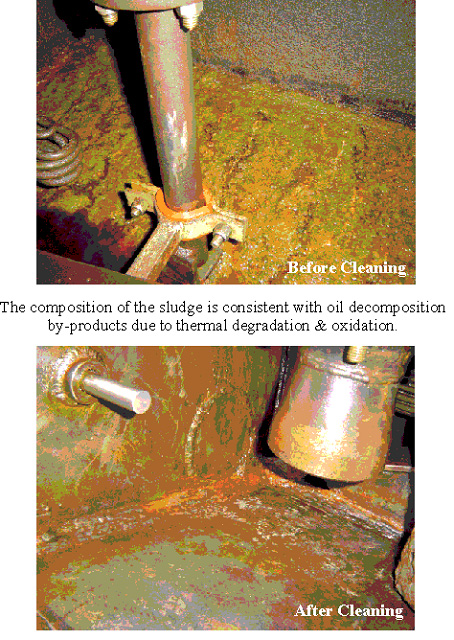
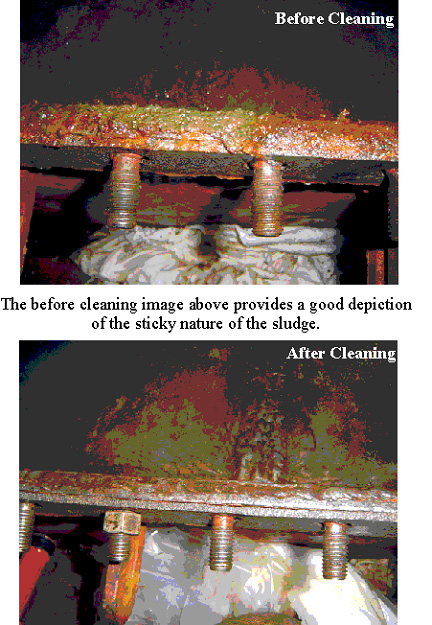
Fig 3. A wide range of deposit types were found during system cleaning. Photos courtesy of Clarus Fluid Intelligence.
Example 2: Impact of not cleaning a large frame gas turbine reservoir between oil changes
A large frame gas turbine decided not to do an oil flush when changing the oil. The used oil was degraded and the plant had been experiencing valve performance problems due to varnish in the system. The impact of not adequately cleaning the system prior to recharging with new oil can be viewed below.
Table 1: Adding new oil to a varnished gas turbine, significantly impacts the quality of the fluid..

As can be seen in Table 1, the antioxidants have depleted 26% after one week of use. This is due to the antioxidants reacting to the residual contamination left in the system. The MPC (varnish potential) has also escalated to beyond the “normal” classification for this application.
In this case, not cleaning the system before a new fill of oil resulted in approximately 30% less life.
The oil will also have lower performance, possibly impacting plant reliability and availability.
.
Table 2: Estimated Financial Impact of Not Cleaning the Lube System between Oil Changes

An experiment to understand the reactivity of varnish components.
A simple experiment was set up to understand the reactive nature of varnish and the impact that it has on new oil. A filter that contained significant varnish deposits was first rinsed with petroleum ether to remove the oil – leaving the varnish on the media. The varnish loaded media was then placed in a beaker of new oil and allowed to stir for one day.
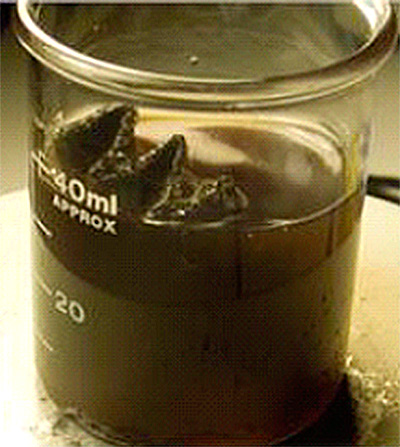
Fourier Transform Infrared Analysis was then performed on the oil after 48 hours.
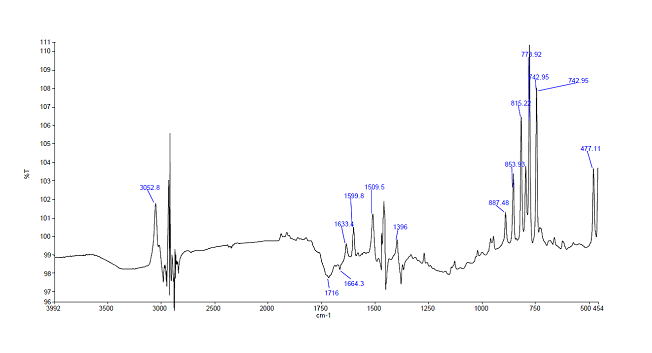
Visually, one can see that the oil has changed color significantly and has dissolved some of the varnish components in the filter. The addition of the degradation products to the oil can be seen at 1664cm-1 (olefinic components) and at 1716cm-1 (carboxylic acids).
As shown by the FTIR spectra, a significant concentration of amine antioxidants has been lost from the new fluid. This can be seen by the sharp peaks at 3052 cm-1, 1633 cm-1, 1599 cm-1, 887 cm-1, 853 cm-1, 773 cm-1, 742 cm-1 corresponding to the amine antioxidant chemistry in the new oil. This experiment demonstrates the negative impact degradation products have on new oil additives.
Options for Flushing Turbine Oil Systems before an Oil Change
There are a multitude of different flushing techniques used. We have categorized these methods into three general groups:
Chemical Flushing – surface active chemistry is used to remove varnish and sludge from the system. The surface-active cleaning agent is typically an oil soluble solution composed of naphthenic base with detergents, dispersants and corrosion inhibitors which is added to the in-service turbine oil. The surface active agent is often added at a treat rate of 10% 48-hours before the outage. Supplemental filtration is usually required to handle the high amount of contamination that is released during the flush. The in-service oil and cleaner are drained from the system and a sacrificial flushing oil is used to rinse remaining cleaner from the system. Often, multiple partial charges of flushing oil are used to adequately dilute the cleaner in the system to minimize performance impact on the new charge of oil. Sometimes, water-based fluids with cleaners are used as the flushing fluid.
Mechanical Flushing – Heated oil is pumped at a high velocity throughout the system using external pumps. Flow rates are typically 3-4 times normal flow rates and require a minimum Reynolds Number of 4,000 to achieve turbulent flow. Bearing jumpers are installed to increase bearing supply and return flow rates, as well as protective bearing surfaces from abrasive contaminants. Other components such as system headers and valve blocks are also isolated from the flush. Supplemental side stream filters, typically bag filters, are also installed to collect contaminants that are pushed out of the system from the turbulent flow of the oil. Manual cleaning of components often accompanies a mechanical flush.
Solubility Enhanced System Cleaning – Boost VR+, a compatible, solubility enhancing agent is blended into the in-service turbine oil 3 months prior to the planned outage. This chemistry greatly improves the deposit control characteristics of the turbine oil. It works by increasing the solubility of in-service fluids so that the oil has the ability to readsorb system deposits like sludge and varnishes. During the outage, the in-service oil and solubility enhancing agent is drained from the system and the cleaned reservoir is recharged with new oil. No sacrifical rinsing oil is required since the solubility enhancer is compatible with the in-service oil.
The ability of an oil to redissolve deposits depends upon it having negative free energy from a thermodynamic perspective. Le Chatelier’s law (the Equilibrium Law) governs the balance of this energy and does so by dissolving more deposits into the oil. Adding Boost VR+ agent to the lubricant increases its solubility, providing the required kinetic forces to redissolve deposits back into the fluid.
In addition, a Fluitec ESP system is connected to the turbine oil during the 3-months prior to an outage. The filtration system must have the capability of removing dissolved degradation products from the oil. This allows the contaminants to continually be removed from the oil and restores the ability of the fluid to dissolve more contaminants.
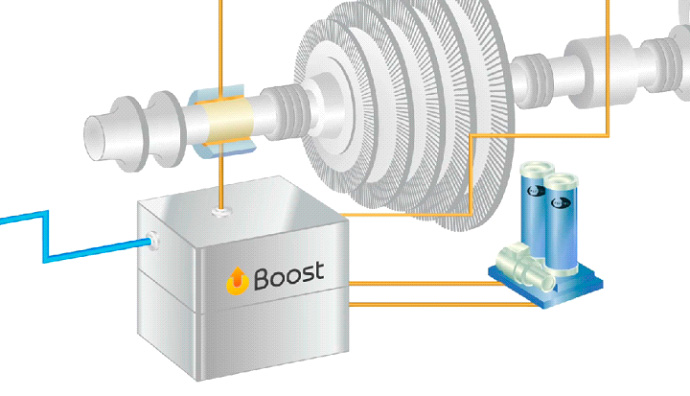
Fig. 6 – Example of the synergy between Boost VR+ and ESP to efficiently restore lube system cleanliness
Table 3: Overview of Turbine Oil Systems Flushing Technologies
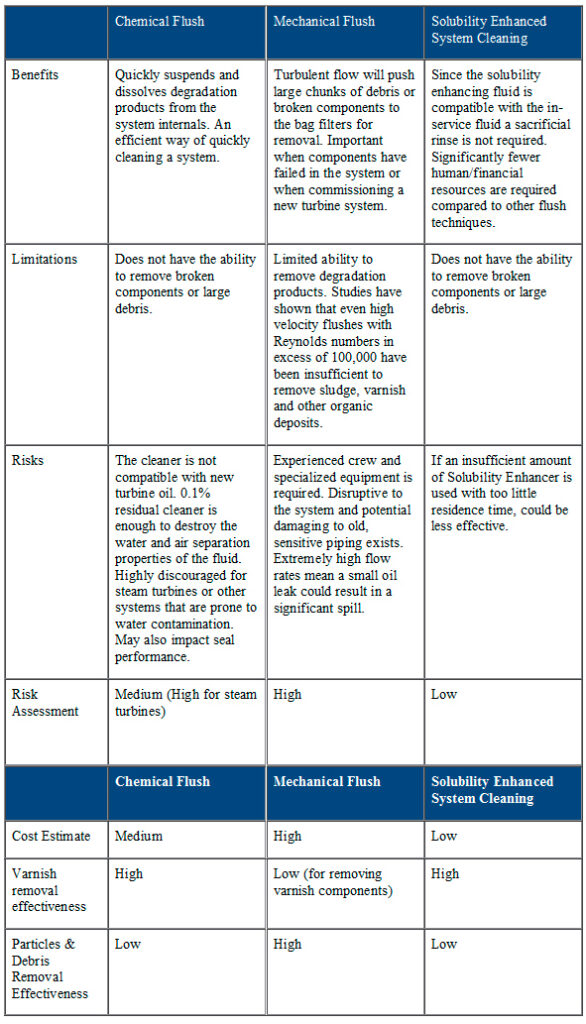
Flushing services often come with a combination of technologies and flushing techniques bundled together. In all cases however, it is critical to match the various technologies with your flushing objective and resources.
A Case Study from a Coal-Fired Power Plant that Compared to System Cleaning Techniques
Flushing services often come with a combination of technologies and flushing techniques bundled together. In all cases however, it is critical to match the various technologies with your flushing objective and resources.
The Flushing of Boiler Feed Water Pump 1
The services were outsourced to a professional flushing company which performed the services during a planned outage. The following procedures were followed:
- At the beginning of the outage, the lube system was drained and disposed.
- Restrictive flow areas and critical components were isolated from the flush with the creation of specialized jumper hoses.
- Confined Space Tank Cleaning was done on the reservoir.
- A water-solution with a citrus cleaner was added to the system.
- An external pump and bag filters were used to generate very high flow rates.
- At the conclusion of the chemical flush, the water was removed from the system from draining and evaporation.
- The oil system was charged with new oil.
- A high velocity, high temperature oil flush was performed to remove any other contaminants from the system.
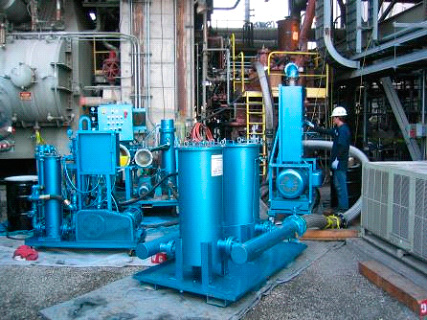
Total Time for the flush: 2.5 weeks
Estimated hours required to support the flush during the outage: 100 hours
Total Cost for the flush: $150,000
Effectiveness of the flush: All varnish and contaminants were removed from the system. The flush was considered a success.
The Flushing of Boiler Feed Water Pump 2
For the second system, the plant performed a Solubility Enhancement System Cleaning by following these procedures:
- 5% Solubility Enhancing Agent was added to the system 3 months prior to the outage
- A suitable chemical filtration system (ESP technology) was set up to continually clean the fluid and restore the fluid’s ability to dissolve contaminants
- During the outage, the used oil was drained from the reservoir and from all low points in the system.
- The system was then recharged with new oil.
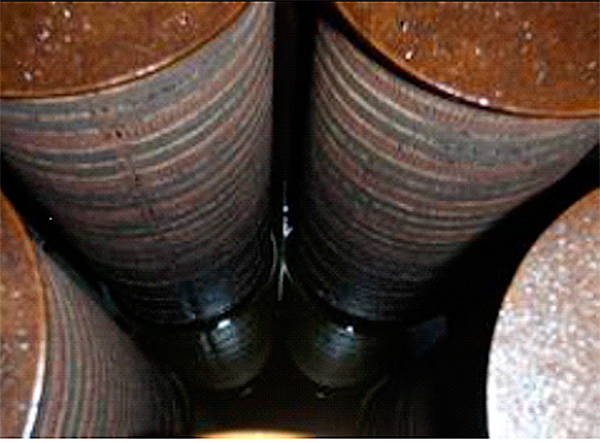
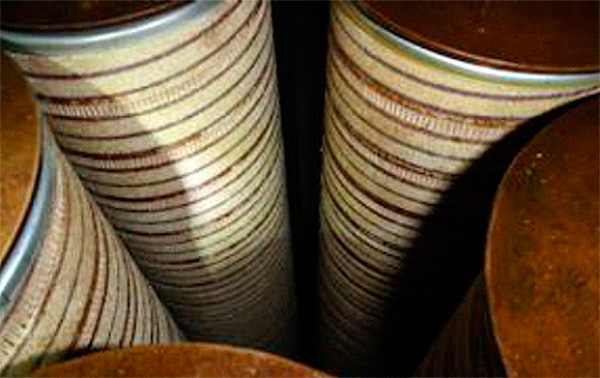
Total Time for the system cleaning: 3 months
Estimated hours required to support the flush: 8
Total Cost for the flush: $50,000
Effectiveness of the flush: All varnish and deposits were removed from the system. The flush was considered a success.
.
Feed Water Pump Case Study Summary
The plant was equally satisfied with the outcome of both flushes.
Boost VR+ however was one third of the price and required significantly less internal resources to support.
Other concerns about residual cleaning agent left over in the turbine oil were also eliminated.
Conclusion
Oil flushing encompasses many different types of cleaning methodologies to remove contaminants from lube systems and restore system cleanliness. It is critical to match the cleaning technique with the type of contaminant in the system and the objective of the flush.
Anytime lubricant systems are invaded through flushing, it is considered disruptive to the system and carries significant risk if it is not done correctly. Sometimes however, oil flushing is inevitable. When system components break or a new machine is being commissioned, flushing is required to remove damaging contaminants.
The most common time that turbine oil users contemplate a flush is between oil changes. If the system is free of deposits and the new charge of oil is compatible with the existing in-service oil, a flush may not be required. In many cases however, flushing is recommended between oil changes. The costs of not cleaning the system adequately before putting in new oil can be significant and exposes the plant to availability and reliability losses.
The two most common methods of flushing between oil changes are performing a chemical flush or a solubility enhancement system cleaning. In most cases, the solubility enhanced system cleaning provides a lower risk, lower cost alternative to restore system cleanliness.
ASTM D6439 defines a successful flush as, “clean pipe and system components are obtained in a minimum of time and with a minimum of effort.” Boost VR+ and ESP provides the most efficient way of restoring system cleanliness between oil changes.
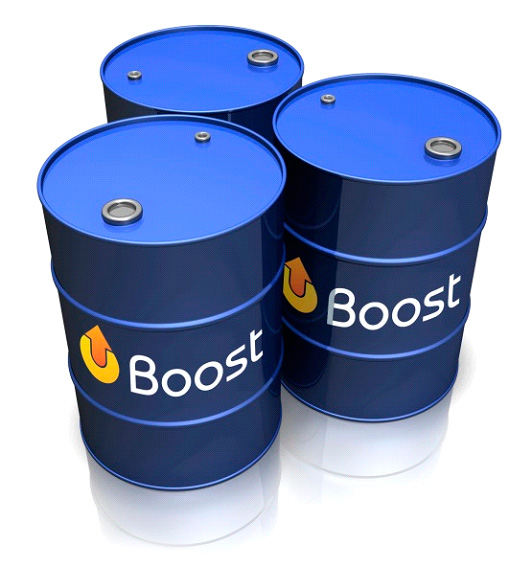
FOR MORE DETAILS PLEASE CONTACT FLUITEC AT
info@fluitec.com or visit us at www.fluitec.com.